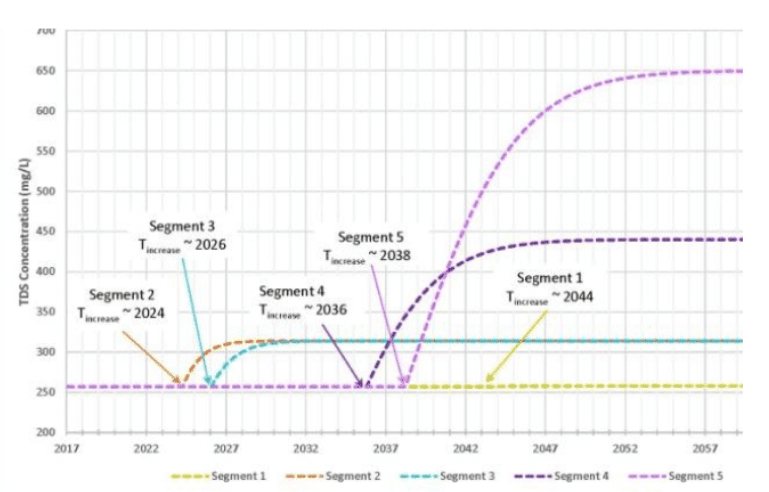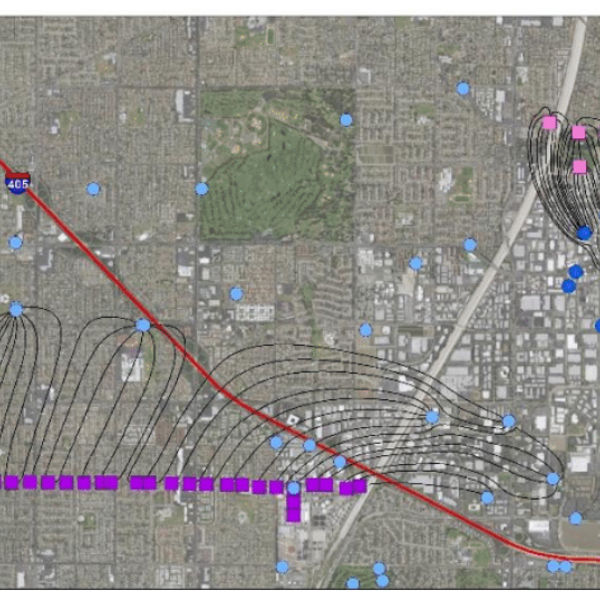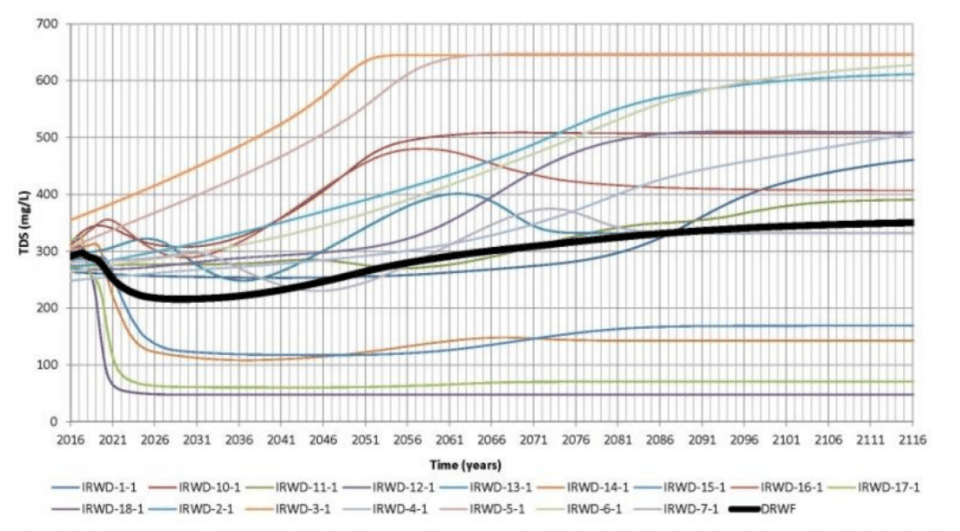Project Description
Evaluation of Potential Water Quality Impacts from Proposed Injection of Desalinated Seawater in the Orange County Groundwater Basin
Irvine Ranch Water District (2016 – Ongoing)
Project Objective
Evaluate potential groundwater quality impacts associated with the proposed injection of desalinated seawater in seawater intrusion barrier wells and other injection wells throughout the Orange County groundwater basin. The objectives of this project are similar to those of the RGSP.
 Project Approach
Project Approach
Initially, the project involved assessing two sources of recycled water for injection (i.e., the Talbert Seawater Intrusion Injection Barrier and the Mid-Basin Injection Project) that lended itself to analysis using an analytical solute transport model coupled to an analytical mixing model to assess future concentrations and mass loadings of total dissolved solids, chloride, and boron at Irvine Ranch Water District’s (IRWD’s) Dyer Road Well Field (DRWF). We presented our findings to both IRWD and the Orange County Water District (OCWD). Subsequent discussions with IRWD and OCWD led OCWD to consider other injection scenarios that involve injection of water at numerous locations throughout the southern portion of their groundwater basin in addition to their seawater intrusion injection barrier and Mid-Basin project. Due to the complexity of these other injection scenarios, TH&Co recommended that a numerical model be used whereupon IRWD instructed us to work collaboratively with the OCWD to secure their basin-wide groundwater model. Using OCWD’s basin-wide

model, we developed and successfully calibrated a subsection (‘cutout’) model for our area of interest. Calibrating the cutout model involved developing boundary and initial head and Water Systems Consulting, Inc. Proposal to Provide Phase 1B Hydrogeologic Evaluation – Regional Groundwater Sustainability Project 2-Mar 17 10 concentration conditions for our study area. Once the numerical groundwater flow model (using MODFLOW) was calibrated from 2008 to 2016, forecasting simulations using MODPATH were conducted to assess capture zones for the 16 wells comprising IRWD’s DRWF. Numerical solute transport modeling using MT3DMS was then conducted to assess concentrations for the three constituents of interest at each DRWF well and the combined concentrations and mass loadings that these wells will influx to IRWD’s Michelson Road water treatment plant (WTP). IRWD’s water treatment engineers are running a separate model using our MT3DMS output as input to their model to assess concentrations in water that IRWD would ultimately deliver to its users.
The groundwater flow model was successfully calibrated and is currently being used along with MODPATH and MT3DMS to evaluate total dissolved solids (TDS), chloride, and boron concentrations under different injection scenarios.


